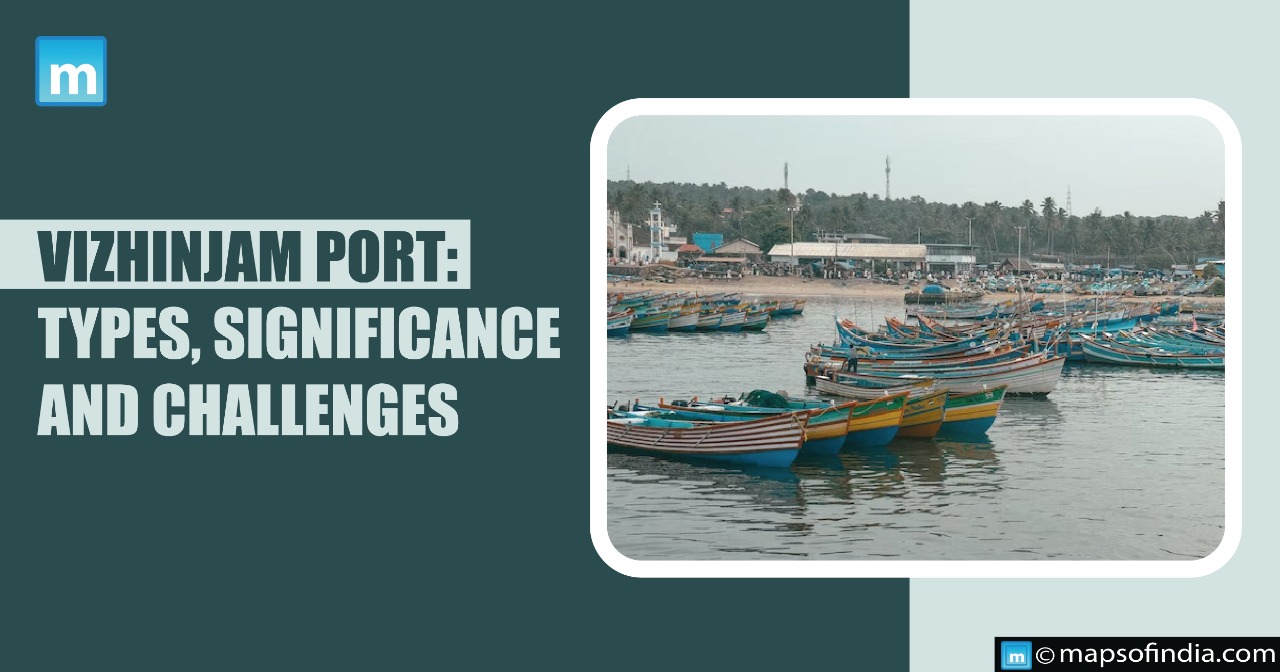What kinds of ports are there in India?
Ports may be divided into two categories based on the types of cargo they handle:
- Gateway ports: They rely heavily on exporting and importing goods from or going to the hinterland.
- Ports used for transhipment: In these harbours, cargo is transferred from a mother ship to a daughter ship.
What problems do transhipment ports have?
Transhipment ports throughout the world are facing uncertain futures. For instance, the busiest transhipment ports, like Malaysia, Hong Kong, and Singapore, suffer severe traffic volume losses. Major Shipping Lines are either postponing or delaying the already ordered extra-large container ships. As a result, fewer mother boats would be in use, leading to a decrease in transhipment quantities.
What role does Vizhinjam Port play?
A port called Vizhinjam is being built near the Arabian Sea in Trivandrum, India. There are three phases to accommodate passengers, containers, and other clean cargo. It is intended that Vizhinjam serves as a transhipment port.
What problems does the Vizhinjam port have?
- Despite a significant financial contribution from the Keralan government, Vizhinjam is not financially sustainable.
- High worldwide competitiveness exists at the Vizhinjam container transhipment station.
- Colombo, only 202 nautical miles from Vizhinjam, has become the world’s 25th-largest container port. Thanks to Chinese investments, Colombo port will be even more developed by the time Vizhinjam began operations in 2019.
What conclusions has the Comptroller Auditor General of India (CAG) drawn?
The typical PPP project concession period in large ports is 30 years, while in Vizhinjam, it is 40 years plus an additional 20 years. Based on business estimates, there are speculative calculations of the project’s revenues. According to the CAG, the State is responsible for 67 % of the investment’s expenditure, while Adani Ports is only responsible for 33%.
To make the port of Vizhinjam a desirable location for investment, the State is constructing breakwaters there, which enable road and rail connectivity, power, water supply, land acquisition, and backup space, a crucial component of the port infrastructure.
Recent Concerns
The Vizhinjam International Transhipment Deepwater Multipurpose Seaport demonstrations, which have been going on for a week in Kerala’s capital Thiruvananthapuram, have become more violent as fishermen lay siege to the port from both the sea and the land.
According to the fishing community, the demonstrations will continue until all of their requests are satisfied. The Kerala Chief Minister stated that the administration was prepared for negotiations and wished to allay the worries of the fishing community. Still, it was unable to agree to stop the project.
Demands of fishermen
The protesters’ primary consideration is that the project is halted and an appropriate environmental impact analysis is conducted.
The community has also made six other demands:
- The repair of those whose homes were lost to marine erosion.
- Efficient measures to reduce coastal erosion.
- Providing fishermen with financial support on days when weather warnings are issued.
- Payment to the families of individuals killed in fishing accidents.
- Reduced kerosene prices.
- A system for dredging the fishing port of Muthalappozhi in Anchuthengu, Thiruvananthapuram district.
